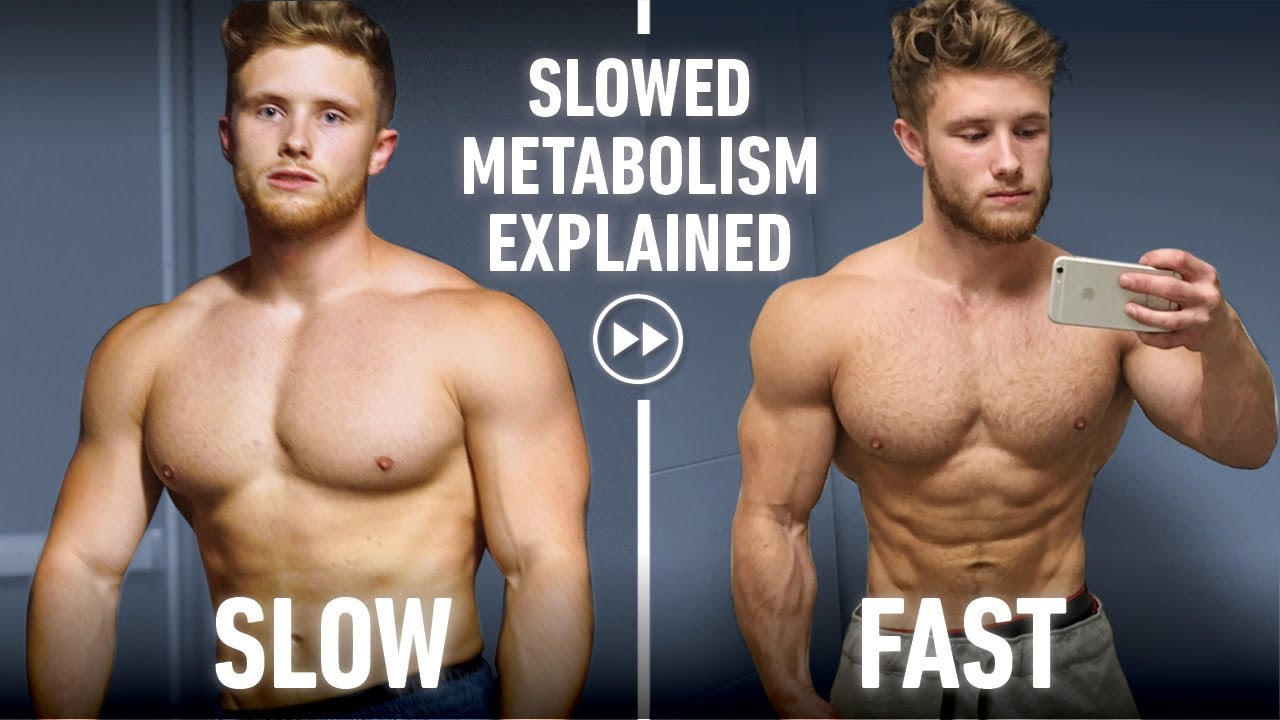As a fitness and nutrition coach with two decades of experience helping individuals achieve their weight gain, weight loss, and bodybuilding aspirations, I’ve seen countless approaches to body transformation. One of the most common and often misunderstood aspects of any weight loss journey is how our metabolism responds. It’s not just about “calories in, calories out”; our bodies are incredibly complex, and they adapt to changes in energy intake and expenditure in fascinating ways.

Decoding Metabolic Adaptation: What Happens When We Lose Weight?
When we embark on a weight loss journey, a natural and expected outcome is a decrease in our overall energy expenditure. This isn’t just about the “calories out” side of the equation; it’s a multi-faceted physiological response. Our metabolic rate, which is the sum of all energy expended by our bodies, comprises several key components:
- Resting Metabolic Rate (RMR): The calories our body burns at rest to maintain vital functions.
- Thermic Effect of Food (TEF): The energy expended to digest, absorb, and metabolize food.
- Exercise Activity Thermogenesis (EAT): Calories burned during structured exercise.
- Non-Exercise Activity Thermogenesis (NEAT): Energy expended through all non-exercise physical activity, such as fidgeting, walking, or standing.
As we lose body weight, particularly lean mass, our RMR will naturally decrease because there’s simply less metabolically active tissue to support. This is a straightforward function of having a smaller body. However, what the scientific literature consistently demonstrates – and what often surprises people – is that our total energy expenditure can drop more than what would be predicted solely based on the reduction in body mass. This phenomenon is what we refer to as metabolic adaptation.
This adaptation isn’t a sign of a “broken” metabolism or “starvation mode” in the sensationalized sense. Instead, it’s an intelligent, evolutionary survival mechanism. Our bodies are designed to be highly efficient in times of scarcity. When calorie intake is reduced, the body perceives this as a threat to survival and becomes more efficient at utilizing energy to conserve its reserves.
This adaptive response triggers a cascade of hormonal changes. Hormones like leptin, which plays a crucial role in satiety and metabolic rate regulation, tend to decrease significantly during a diet. These hormonal shifts not only influence our energy expenditure but also impact hunger cues, muscle-building capacity, and even reproductive function, especially as body fat levels become very low.
While all components of metabolic rate can be affected, NEAT often takes the biggest hit. When calories are restricted, our bodies subconsciously reduce spontaneous movements, fidgeting, and other non-exercise physical activities to conserve energy. This subtle reduction in daily movement can significantly contribute to the overall metabolic slowdown. We also see minor reductions in RMR that are beyond what’s expected from weight loss alone, and EAT can decrease due to increased muscular efficiency, meaning we burn fewer calories for the same amount of exercise. The thermic effect of food also diminishes simply because we’re consuming less food overall.

Navigating the Adaptive Landscape: Strategies to Mitigate Slowdown
Understanding metabolic adaptation is crucial, but the real power lies in knowing how to proactively manage it to ensure continued progress and maintain your hard-earned results. There are two primary approaches: addressing the causes and mitigating the effects.
Addressing the Causes: Strategic Dieting
The primary drivers of metabolic adaptation are the size of your calorie deficit, the duration of your diet, and the degree of leanness you achieve. While you’ll inevitably get leaner to reach your goals, you can strategically manage the other two factors.
- Slower Rate of Weight Loss: Opting for a more gradual weight loss pace can be a powerful tool. A smaller daily calorie deficit signals less “danger” to your body, potentially leading to a less aggressive adaptive response. Research consistently shows that slower weight loss is associated with better hormonal profiles, greater retention of lean muscle mass, and improved adherence over time.
- Practical Recommendation: Aim for a weight loss rate of 0.5% to 1% of your body weight per week. For a 200-pound individual, this translates to 1 to 2 pounds per week. While a higher initial rate might be achievable for those with significant weight to lose, as you get leaner, a slower pace becomes increasingly beneficial.
- Strategic Diet Breaks and Refeeds: Incorporating planned breaks from your calorie deficit can significantly help combat metabolic adaptation.
- Refeeds: These are typically 1-2 day periods where you temporarily increase your calorie intake to maintenance levels, often with a focus on higher carbohydrate consumption. While a single day might not be enough to fully reverse hormonal shifts, two consecutive days can be more effective.
- Diet Breaks: These are longer periods, usually 1-2 weeks, where you intentionally eat at maintenance calories. Studies like the “Matador Study” have shown that alternating two weeks of dieting with two weeks of maintenance can attenuate the reduction in metabolic rate and even lead to greater fat loss over a longer period, though the total time to reach the goal will be extended.
Mitigating the Effects: Optimizing Your Physiology
Beyond managing the deficit itself, several strategies can help preserve muscle mass, maintain performance, and support overall well-being during a diet.
- Appropriate Macronutrient Distribution: When calories are scarce, every macronutrient counts.
- Protein: Prioritize adequate protein intake to preserve lean muscle mass, which is crucial for maintaining a higher RMR. Aim for 1.6-2.2 grams of protein per kilogram of body weight (or even higher during aggressive deficits).
- Fats: Don’t drastically cut fats. They are essential for hormone production and the absorption of fat-soluble vitamins. Include a minimum of 0.5-1 gram of fat per kilogram of body weight.
- Carbohydrates: While often demonized, carbohydrates are critical for fueling intense training sessions and supporting recovery. Distribute your remaining calories primarily towards carbohydrates to optimize performance and minimize muscle breakdown.
- Smart Training: Your training needs to adapt as your body’s recovery capacity diminishes.
- Resistance Training: Continue to lift heavy and focus on maintaining strength. This is the primary signal to your body to hold onto muscle mass. Don’t drastically increase volume, as your ability to recover is compromised.
- Cardio Management: While cardio helps create a deficit, excessive amounts can add to your recovery burden, especially when calories are low and sleep might be impacted. Prioritize weight training, and use cardio strategically. If your recovery is suffering, consider reducing cardio volume or intensity. Remember, cardio isn’t just “negative calories”; it’s a physiological stressor.
Beyond the Diet: Recovery and Maintenance
Once your dieting phase is complete, the journey isn’t over. The period immediately following a diet is critical for recovering your metabolism and preventing excessive fat regain. This is where the concepts of “reverse dieting” and immediate bulking come into play.
Recovery from Dieting
Your body has been in a state of energy conservation, and it needs time to adjust. Hormones like leptin and testosterone will gradually rebound, but this process takes time. The goal is to slowly increase calorie intake to maintenance levels and beyond, allowing your metabolism to normalize without a massive surge in body fat.
Reverse Dieting vs. Immediate Calorie Increase
- Reverse Dieting: This involves a gradual, incremental increase in calorie intake over several weeks or months after a diet. The idea is to slowly bring calories up to maintenance (and sometimes slightly above for a “recovery phase”) while monitoring body weight and composition. This controlled approach aims to minimize fat gain while allowing the metabolism to adapt upwards.
- Immediate Calorie Increase/Bulking: This involves a more rapid increase in calories, often jumping directly into a caloric surplus to promote muscle growth. While this can accelerate muscle gain, it carries a higher risk of significant fat gain if not managed carefully, especially after a period of metabolic adaptation.
The best approach depends on your individual goals, how lean you got, and your tolerance for potential fat gain. For most individuals, especially those who dieted to very low body fat levels, a reverse dieting approach offers a more controlled and sustainable transition back to higher calorie intake, allowing for metabolic recovery while keeping fat gain in check.

Debunking “Metabolic Damage” and “Starvation Mode”
The terms “metabolic damage” and “starvation mode” are often thrown around in the fitness world, creating unnecessary fear and confusion.
- “Starvation Mode”: While your metabolism does adapt and become more efficient, it doesn’t shut down to the point where you can’t lose weight. If you’re consistently in a calorie deficit, you will lose weight. The slowdown is an adaptation, not a complete halt.
- “Metabolic Damage”: This is a misnomer. Your metabolism isn’t “damaged” in a permanent sense. While prolonged, aggressive dieting can lead to significant hormonal and physiological changes that make further weight loss challenging, these adaptations are largely reversible once you exit the deficit and provide your body with adequate energy. The “damage” refers to the magnitude of the adaptation, which makes it harder to lose weight or maintain a lower weight without continued effort. It doesn’t mean your metabolism is inherently broken forever.
Final Thoughts
The journey of body transformation is nuanced, requiring patience, consistency, and a deep understanding of your body’s responses. Metabolic adaptation is a real and predictable physiological phenomenon, but it’s not a barrier to your success. By implementing strategic dieting practices – such as a slower rate of weight loss, planned diet breaks, optimal macronutrient distribution, and smart training – you can effectively navigate these adaptations, maximize fat loss, preserve muscle, and set yourself up for long-term success. Remember, sustainable results are built on smart, informed choices, not on quick fixes or extreme measures.



